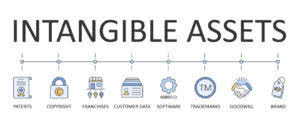
Management is specifically excluded from tip pool participation, including a non-traditional tip pool. In order to operate using a non-traditional tip pool, all employees must be paid the full cash minimum wage (so no minimum wage tip credit). Ownership is also prohibited from claiming the FICA tip credit if a non-traditional tip pooling arrangement is in place. The cost of preparing the item on the menu is divided by the total revenue from the item.

Want More Helpful Articles About Running a Business?
For example, let’s say that you sell one type of dish for $20 and it costs your restaurant $15 to make this item. Using the previous formula, we would find out that this unit margin is 25%. Sales forecasting is a prediction of future sales and supply requirements that takes into account historical and expected data on your business. In order to create this how to do bookkeeping for a restaurant budget, you should start by looking at the finances of previous months and how much profit was made on average per month after all expenses were paid. For example, if you know that the profitability of your restaurant is suffering because you do not have enough employees, then it might be a good idea to use your budget target to hire more workers.

So then, how does bookkeeping differ from accounting?
Tip-producing work is tasks that one would be customarily tipped for, such as serving food and drink. Tip-supporting work could include tasks such as setting tables, rolling silverware, or closing activities. The rule states that at least 80% of a tipped employee’s time should be spent performing tip-producing work. Additionally, of the maximum 20% of time that can be spent performing tip-supporting work, such work should not be performed for more than 30 consecutive minutes. According to the National Restaurant Association, there are 14.7 million people in the restaurant industry.
Top Restaurant Accounting Tips By Experts In The Industry
The information provided on this website does not, and is not intended to, constitute legal, tax or accounting advice or recommendations. All information prepared on this site is for informational purposes only, and should not be relied on for legal, tax or accounting advice. You should consult your own legal, tax or accounting advisors before engaging in any transaction.
- The more information you have quick access to, the more accurate your books will be.
- Labor groups and some restaurant owners prefer tips, which give customers more power and employees more control.
- These expenses may include rent, lease payments, utilities, or even restaurant management software.
- Keep the financial information flowing from sales on the floor to costs in the kitchen through to your accountant operations teams by combining Toast and xtraCHEF.
- Keeping on top of your bookkeeping is worth far more than avoiding tax season headaches.
- Since your POS logs revenue coming in and much of the money going out of your restaurant (credit card refund, food cost, labor), you can use it to analyze sales and costs.
If your restaurant is claiming the tip credit against cash minimum wages, you must abide by the 80/20 rule. The purpose of the rule is to limit the amount of non-tipped work performed by tipped employees so that they have ample opportunity to earn their minimum wage, or higher, through tip-producing work. The beginning inventory is the amount of food you have in your kitchens and storage rooms at the beginning of the period. At the same time, purchases refer to the supplies you purchase in food and beverage orders. Final inventory is the number of supplies you have left when your defined tracking period is over.
- The second employer tip responsibility is withholding income tax, Social Security, and Medicare tax on tip income.
- Any accounting software you select to assist with tip income reporting should integrate directly with your POS system to eliminate manual and duplicative data entry.
- A cash flow statement tracks all the money that comes in and out of your restaurant during a specific period.
- It is important to understand how much money you need, what drives profitability, and all of the factors which influence restaurant success.
- Its simple yet robust interface helps you learn accounting principles as you manage your restaurant.
- For example, if you know that the profitability of your restaurant is suffering because you do not have enough employees, then it might be a good idea to use your budget target to hire more workers.
- The next step is breaking down your net income into its different components which will tell you more about where the money came from or went during a year.
- Outsourced restaurant accounting firms already have years of experience and can provide comparative data.
- It’s no wonder that it can often end up at the bottom of your endless task list because it takes time and energy, but doesn’t directly benefit your bottom line.
Good accounting software helps you process, gather, and analyze data effortlessly and accurately. POS system integration is a crucial aspect of any restaurant accounting software you use for your restaurant. Once integrated, the software can automate the collection and categorization of your financial transactions. It allows real-time tracking of your financial performance and mitigates errors that occur with manual restaurant accounting.
By using this type of measure, it will be easier for you to determine which items on your menu are making the most money and which ones are not; making it easier for you to improve profitability. Net profit is one of the most important things that an accountant or restaurant owner pays attention to because it is a crucial form of information. Before we dive into the concepts of restaurant accounting, let’s first quickly cover the basics of what accounting is and why it matters. Restaurant accounting is an essential part of running a food establishment. Although it may not be as exciting as other parts of the restaurant biz, without doing it, you wouldn’t be able to have a restaurant in the first place.
Using the wrong accounting method
While they are often used interchangeably, there are actually differences between accounting and bookkeeping. They are related because bookkeeping lays the groundwork for accounting, but these processes serve different functions. Keep the financial information flowing from sales on the floor to costs in the kitchen through to your accountant operations teams by combining Toast and xtraCHEF.
A restaurant accountant has many responsibilities, from recording transactions in the general ledger and accurately coding and categorizing those transactions to bank statement reconciliation and budget definition. For efficient restaurant accounting, you need to understand the ins and outs of the food and beverage industry. This step-by-step article is an excellent overview to help you get a handle on your restaurant bookkeeping. Financial software is designed to make restaurant accounting as easy as possible for restaurant owners. There are a number of different programs to choose from and each has its own advantages and disadvantages. We have covered the manual requirements of how to record tips in accounting.












